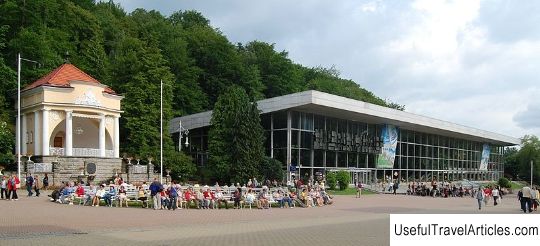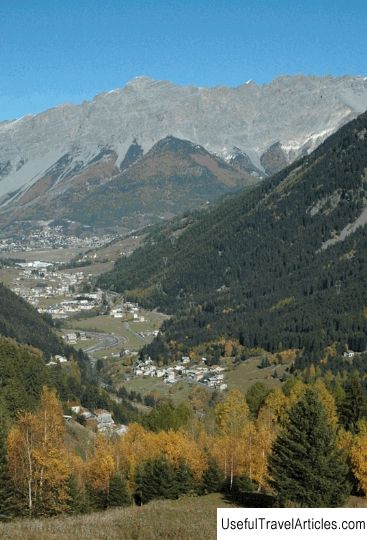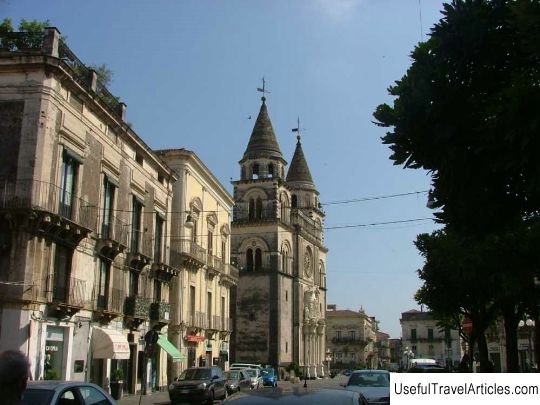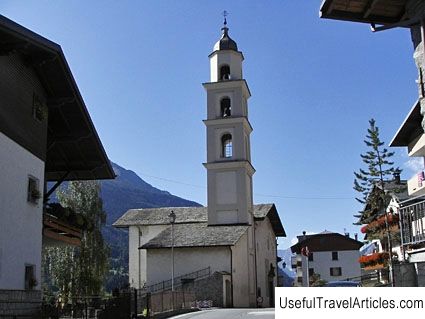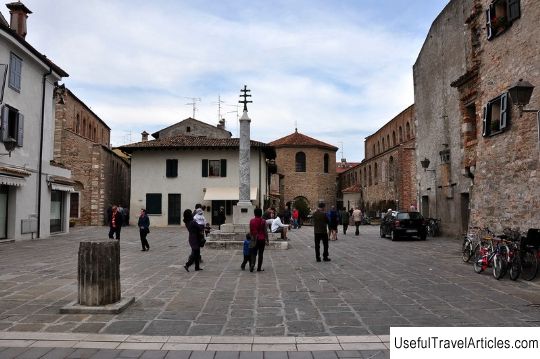Historical center of Bormio (Centro storico di Bormio) description and photos - Italy: Bormio
Rating: 8,0/10 (1243 votes) 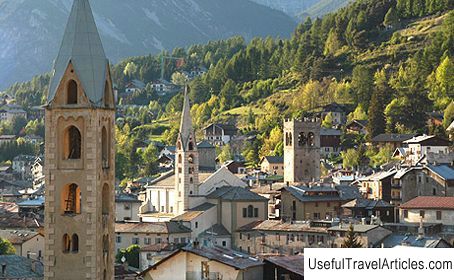
Historical center of Bormio (Centro storico di Bormio) description and photos - Italy: Bormio. Detailed information about the attraction. Description, photographs and a map showing the nearest significant objects. The title in English is Centro storico di Bormio. Photo and descriptionThe historic center of Bormio, with its ancient palaces, towers, churches, chapels, cobbled streets, squares and fountains, serves as a living reminder of the city's glittering past, which was an important trading point between Milan and the northern alpine territories. Bormio is a popular ski resort and its carefully restored historic center has been partially converted into a pedestrian zone. Most of the buildings date back to the 15th and 16th centuries - the heyday of Bormio, when impressive churches were built and palazzo palaces were painted with frescoes and graceful stone portals. At the same time, noble merchant families erected the first high towers as a demonstration of their power. Today tourists can immerse themselves in the atmosphere of the past, going for a walk in the old center of Bormio. It is best to start your journey on Via Roma. At the very beginning of this graceful street, lined with palaces, stands the beautiful Romanesque church of San Vitale, with a wooden altarpiece from the 14th century. A little further, one can see Torre degli Alberti, one of the city's most prominent towers. Via Roma leads to Piazza Cavour, better known as Piazza del Querx, which has always been the center of Bormio's social life. Overlooking the square is the Collegiate Church of Santi Gervasio e Protasio, founded in the 9th century, but completely rebuilt after a fire in the early 17th century. The interior of the church houses several works of art, wood sculptures from the 16th-17th centuries, a 17th-century organ and choir stalls. And in the center of the square stands Kverch - a medieval building with a portico, which once held public hearings and administered justice. Behind it you can see Torre delle Ore - the Clock Tower. Today, the entire Piazza Cavour is dotted with shops, bars and restaurants. To the right of the Collegiate Church begins Via Morcelli, which leads to the old customs building. The ancient Combo bridge, thrown across the Frodolfo River, a tributary of the Adda River, leads to the old Combo district, where it is worth visiting the Church of Santissimo Crocifisso, restored in the 19th century and retaining frescoes from the 16-17th centuries. and the Sassello Church with 15th century frescoes. In the upper part of Bormio, which can be reached via Via della Vittoria, stands the 17th century Palazzo De Simoni with a medieval tower. This building, which now houses the city hall and the library, also houses an interesting museum, which contains about 3 thousand historical exhibits. The museum's collections occupy two floors and are divided into two sections - the art and history section and the ethnography section. The exhibits include works of art from local palaces and churches, such as a fragment of an 11th-century fresco depicting Saint Cecilia, a huge 17th-century altarpiece in gilded wood, and several 19th-century paintings by Francesco Haiza. Also on display are sculptures, engravings, furniture, World War I memorabilia and a collection of historic carriages and sleds.         We also recommend reading Truro Cathedral description and photos - Great Britain: Truro Topic: Historical center of Bormio (Centro storico di Bormio) description and photos - Italy: Bormio. |
